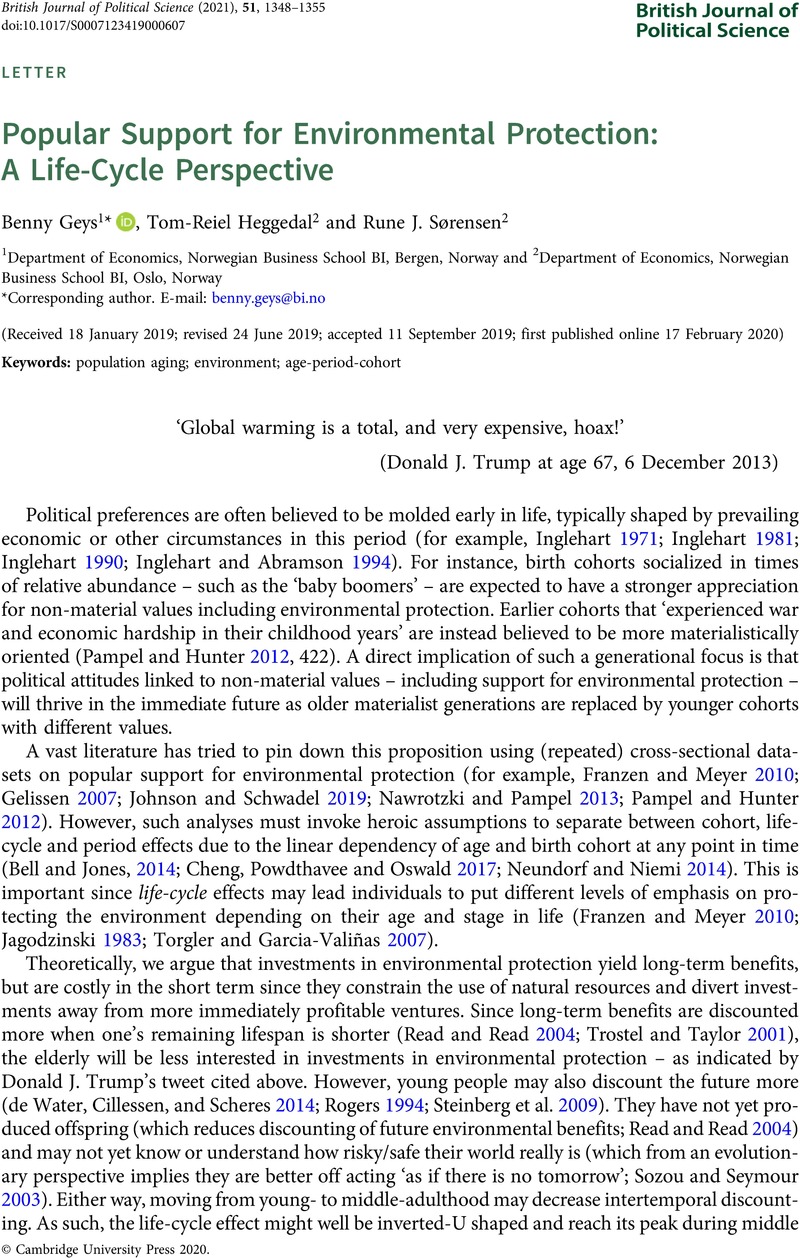Crossref Citations
This article has been cited by the following publications. This list is generated based on data provided by Crossref.
Li, Han
and
Grant, Richard J.
2022.
Climate gentrification in Miami: A real climate change-minded investment practice?.
Cities,
Vol. 131,
Issue. ,
p.
104025.
Zheng, Heran
Long, Yin
Wood, Richard
Moran, Daniel
Zhang, Zengkai
Meng, Jing
Feng, Kuishuang
Hertwich, Edgar
and
Guan, Dabo
2022.
Ageing society in developed countries challenges carbon mitigation.
Nature Climate Change,
Vol. 12,
Issue. 3,
p.
241.
Geys, Benny
Heggedal, Tom-Reiel
and
Sørensen, Rune J.
2022.
Age and vote choice: Is there a conservative shift among older voters?.
Electoral Studies,
Vol. 78,
Issue. ,
p.
102485.
Murdoch, Zuzana
MacCarthaigh, Muiris
and
Geys, Benny
2023.
It's about time! Temporal dynamics and longitudinal research designs in public administration.
Public Administration Review,
Vol. 83,
Issue. 6,
p.
1727.
Liu, Xiaozi
Lindhjem, Henrik
Grimsrud, Kristine
Leknes, Einar
and
Tvinnereim, Endre
2023.
Is there a generational shift in preferences for forest carbon sequestration vs. preservation of agricultural landscapes?.
Climatic Change,
Vol. 176,
Issue. 9,
Zhang, Junjie
Zhu, Lin
Liu, Jie
Yu, Biying
and
Yu, Shiwei
2023.
How ageing shapes the relationship between working time and carbon dioxide emissions: Evidence from Chinese households.
Environmental Impact Assessment Review,
Vol. 98,
Issue. ,
p.
106974.
Schaffer, Lena Maria
and
Umit, Resul
2023.
Public support for national vs. international climate change obligations.
Journal of European Public Policy,
Vol. 30,
Issue. 3,
p.
537.
Graham, Anne
Kruse, Willy
Budd, Lucy
Kremarik, Frances
and
Ison, Stephen
2023.
Ageing passenger perceptions of ground access journeys to airports: A survey of UK residents.
Journal of Air Transport Management,
Vol. 107,
Issue. ,
p.
102338.





